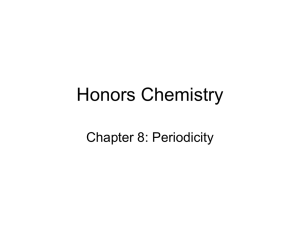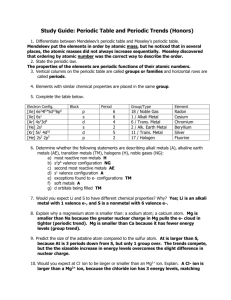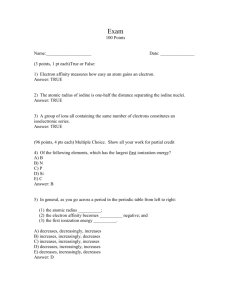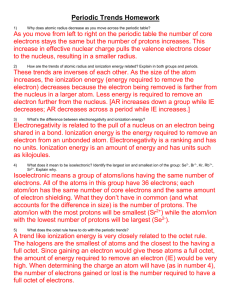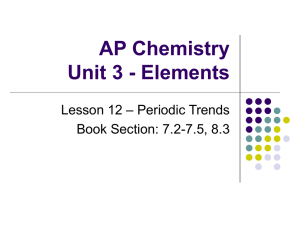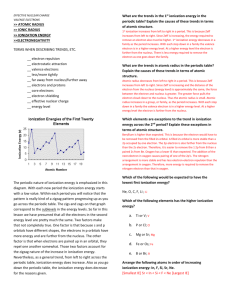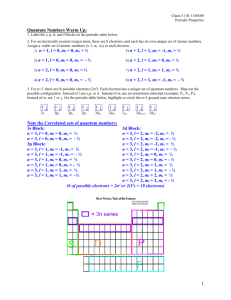File - Malatches Science
advertisement
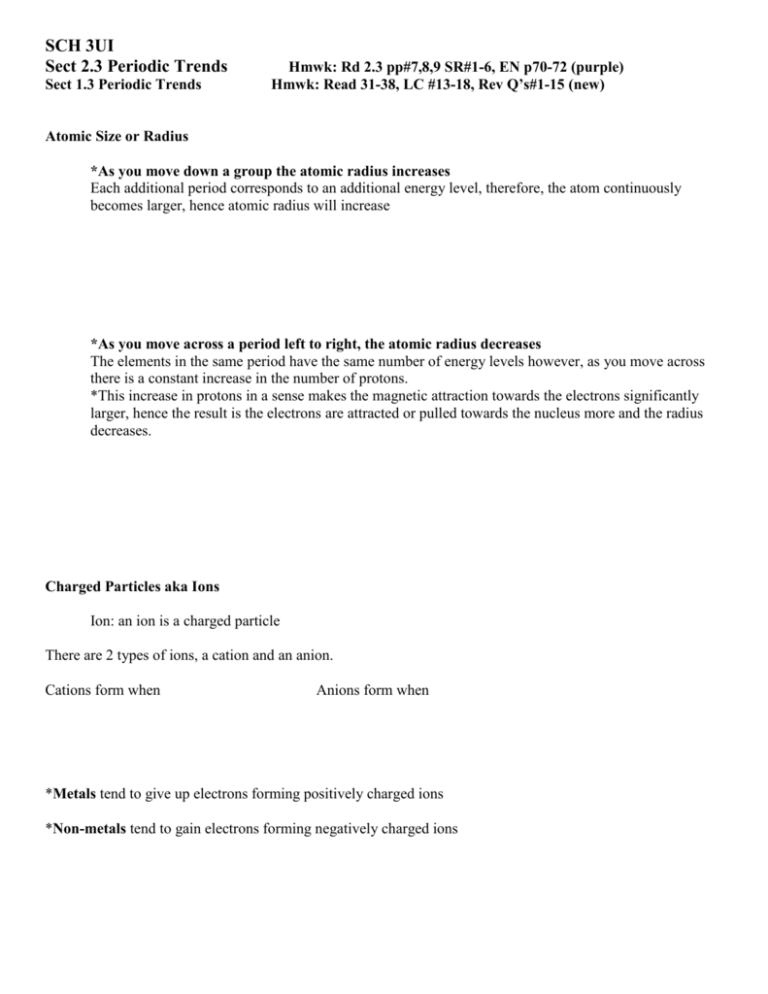
SCH 3UI Sect 2.3 Periodic Trends Sect 1.3 Periodic Trends Hmwk: Rd 2.3 pp#7,8,9 SR#1-6, EN p70-72 (purple) Hmwk: Read 31-38, LC #13-18, Rev Q’s#1-15 (new) Atomic Size or Radius *As you move down a group the atomic radius increases Each additional period corresponds to an additional energy level, therefore, the atom continuously becomes larger, hence atomic radius will increase *As you move across a period left to right, the atomic radius decreases The elements in the same period have the same number of energy levels however, as you move across there is a constant increase in the number of protons. *This increase in protons in a sense makes the magnetic attraction towards the electrons significantly larger, hence the result is the electrons are attracted or pulled towards the nucleus more and the radius decreases. Charged Particles aka Ions Ion: an ion is a charged particle There are 2 types of ions, a cation and an anion. Cations form when Anions form when *Metals tend to give up electrons forming positively charged ions *Non-metals tend to gain electrons forming negatively charged ions *Ionization Energy *. The energy required to remove the first electron from a stable atom is called the first ionization energy. Ionization Energy (IE) is measured in KJ/mol, where KJ is a unit of energy and mol is an amount of a substance. Trends involving Ionization Energy Ionization energy tends to decrease down a group As you move down a group, the period number increases and the number of energy levels increase, therefore the last (valence) electron is farther from the nucleus. The increase distance between the nucleus and the electron weakens the attraction and less energy is required to remove the electron. Ionization energy tends to increase across a period Remember the atomic radius gets smaller as you move across a period, therefore the last electron is getting closer and closer to the nucleus. Since the distance between the last electron and the nucleus is decreasing there is a greater attraction between nucleus and the electron, therefore more energy is required to remove the electron. Electron Affinity -means to have a “liking” for something - Electron affinity with respect to an atom is defined as … *Metals have low Electron Affinity -Remember metals would prefer to lose electrons to form stable electron to form a stable electron arrangement than to gain electrons *Non metals have high Electron Affinity -Remember non metals tend to gain electrons to form a stable electron arrangement that to lose electrons Trend: *Electron Affinity tends *Electron Affinity tends to -Large atomic radius, not much of an attraction towards gaining a new electron -Small atomic radius, there is more of an attraction towards gaining a new electron, however striving to fill an octet - making the atom more stable is much more favorable. Consider a metal versus a non-metal… NOTE: There are some discrepancies within all these trends and the periodic table. These discrepancies will be further explained in Grade 12 Chemistry Electronegativity (EN) * -EN values are listed on the periodic table for each element, note there are no units for EN *Periodic Trend* -EN is the reverse to AR Explanation: -The key to understanding the trend of electronegativity is understanding the relationship of atomic size and the ability to attract electrons in a bond. -If the element has a small atomic radius, there is a strong attraction towards the new electron, hence the element with the smallest atomic radius has the highest EN value and vice versa -If an element has a large atomic radius, there is a weaker attraction towards the new electron and therefore a weak bond if at all will form Examples: -Fluorine Atomic radius = 57 pm EN = 3.98 -Cesium Atomic radius = 267 pm, EN = 0.79
